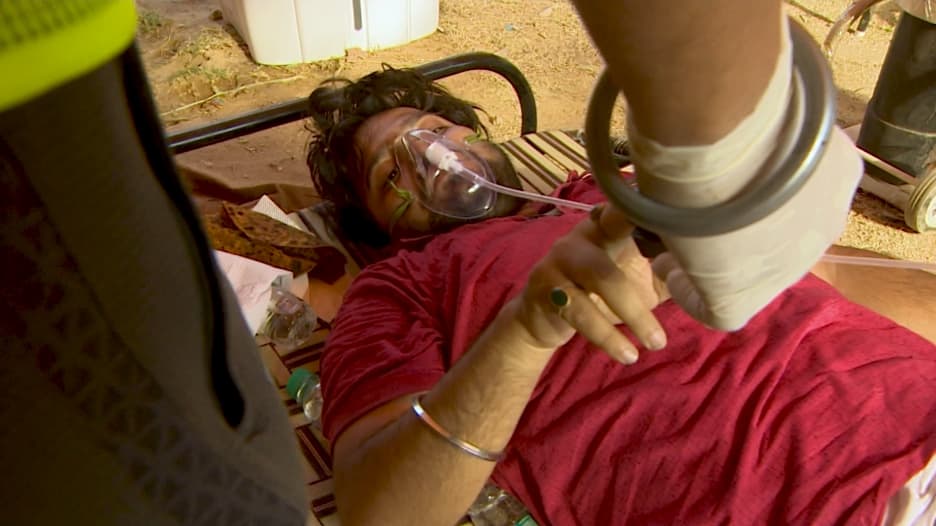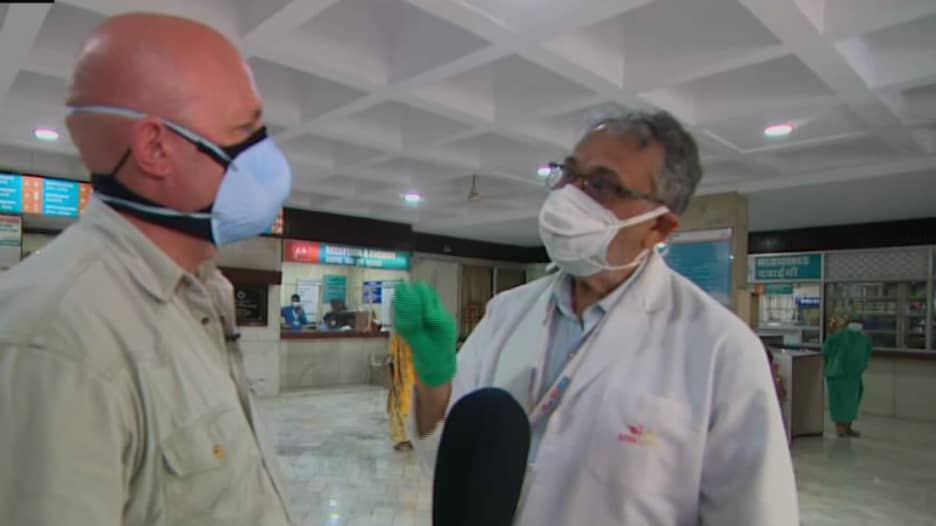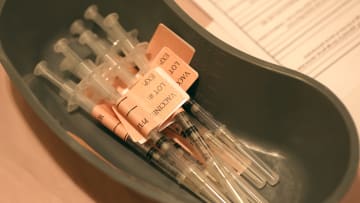دبي، الإمارات العربية المتحدة (CNN)-- وسط التهديدات الصحية التي نشهدها بسبب أمراض الجهاز التنفسي، وهي الإنفلونزا وكوفيد-19 والفيروس المخلوي التنفسي، تستخدم أقسام الطوارئ أداة صغيرة لمراقبة ما إذا كان المريض بحاجة إلى الأكسجين.
وقال طبيب الطوارئ للأطفال الدكتور جوزيف رايت، وهو كبير مسؤولي العدالة الصحية في النظام الطبي بجامعة ميريلاند، والذي يضم 11 مستشفى: "نحن في خضم فيضان أمراض تنفسية".
وأضاف: "يستخدم مقياس التأكسج النبضي لجميع المرضى.. وفي الوقت الحالي، إنها أداة تُستخدم لتقييم حالة الأطفال الذين يعانون من ضيق تنفسي، كجزء من انتشار الفيروس المخلوي التنفسي الذي نشهده حاليًا".
ولكن، تشير مجموعة متزايدة من الأبحاث إلى أن هذه الأجهزة، التي يتم تثبيتها على أطراف أصابع المريض لقياس مستويات الأكسجين في الدم، قد لا تعمل بشكل جيد مع الأشخاص ذوي البشرة الداكنة.
وتفكر إدارة الغذاء والدواء الأمريكية في الخطوات التالية لتنظيم أجهزة قياس التأكسج النبضي، والتي قد تعطي قراءات أقل دقة للأشخاص ذوي البشرة الملونة.
واجتمعت اللجنة الاستشارية للأجهزة الطبية التابعة لها، في شهر نوفمبر، لمراجعة البيانات السريرية حول هذه المشكلة.
إدارة الغذاء والدواء تنظر في كيفية المضي قدمًا
يعمل قياس التأكسج النبضي عن طريق إرسال الضوء من خلال إصبعك. ويستقبل المستشعر الموجود على الجانب الآخر من الجهاز هذا الضوء ويستخدمه للكشف عن لون دمك.
ويذكر أن الدم الأحمر الفاتح مؤكسد بدرجة عالية، لكن الدم الأزرق أو الأرجواني أقل من ذلك.
وإذا لم يتم معايرة الجهاز مع درجات لون البشرة الداكنة، يمكن أن يؤثر الميلانين، وهو مسؤول عن تصبغ الجلد والشعر والعينين، على كيفية امتصاص الضوء بواسطة المستشعر، ما يؤدي إلى قراءات خاطئة للأكسجين.
وكتبت المتحدثة باسم إدارة الغذاء والدواء، شونا نيلسون، في بريد إلكتروني إلى CNN: "تعطي الوكالة هذا الأمر أولوية كبيرة، وسننظر في ملاحظات اللجنة، وتحديد الخطوات التالية المناسبة.. وسننقل أي معلومات جديدة مهمة بشكل علني".
وقال رئيس الجمعية الطبية الأمريكية المنتخب، الدكتور جيسي إهرنفيلد، في بيان: "لوحظت مخاوف بشأن دقة قياس التأكسج النبضي في الجلد المصطبغ لأكثر من 30 عامًا.. ومع ذلك، لا تزال مجتمعات ذوي البشرة الداكنة تواجه آثارًا صحية ضارة من هذه الأجهزة، لا سيما أثناء جائحة كوفيد-19 عند استخدام قياس التأكسج النبضي والاعتماد عليه بشكل كبير".
تم اختراع قياس التأكسج النبضي في عام 1974.
وتشير مجموعة من الأبحاث، يعود تاريخها إلى ثمانينيات القرن الماضي، إلى أن قراءات قياس التأكسج النبضي المعيبة، بين المرضى ذوي البشرة الداكنة، يمكن أن تكون مشكلة حقيقية ومهددة للحياة.
وفي المقابل، أفاد صانعو بعض مقاييس التأكسج النبضي أن دراساتهم لا تظهر أي دليل على التحيز العنصري في دقة أجهزتهم.
ووجدت الدراسات التي أجريت على قياس التأكسج النبضي Nellcor من Medtronic أنها أبلغت عن مستويات الأكسجين في الدم التي كانت في حدود 2٪ من مستويات الأكسجين في الدم للمشاركين، بغض النظر عن لون الجلد.
وقال الدكتور سام أجيزيان، كبير المسؤولين الطبيين لمراقبة المرضى في ميدترونيك، في بيان أرسل عبر البريد الإلكتروني إلى شبكة CNN: "مع ذلك، تُظهر البيانات تباينًا إحصائيًا صغيرًا بين النتائج الخاصة بأصحاب البشرة الفاتحة والبشرة الداكنة".
وأضاف: "تسعى Medtronic إلى إجراء تحسينات في أجهزتنا بناء على فهمنا لتأثير تصبغ الجلد على قراءات قياس التأكسج النبضي".
وتابع: "من خلال مشاركة المعلومات بشكل أفضل، ندعو إلى تحسين الأساليب التي نستخدمها للتحقق من مقاييس التأكسج النبضي، بما في ذلك توحيد كيفية تقييمنا لتصبغ الجلد وزيادة تمثيل المرضى ذوي البشرة الداكنة في التجارب السريرية".
وكان لدى شركة "ماسيمو" للتكنولوجيا الطبية الرأي نفسه.
وأخبر الدكتور ويليام ويلسون، كبير المسؤولين الطبيين في شركة "ماسيمو"، اللجنة الاستشارية لإدارة الغذاء والدواء: "لقد قمنا أيضًا بمعايرة أجهزة التأكسج لدينا والتحقق منها باستخدام أعداد متساوية تقريبًا من الأفراد المتطوعين من ذوي البشرة الداكنة والبشرة الفاتحة.. نحن ندعم الدراسات السريرية المستقبلية ودراسات المرضى حول هذا الموضوع، ونحن نتابع هذه الدراسات حاليًا".






